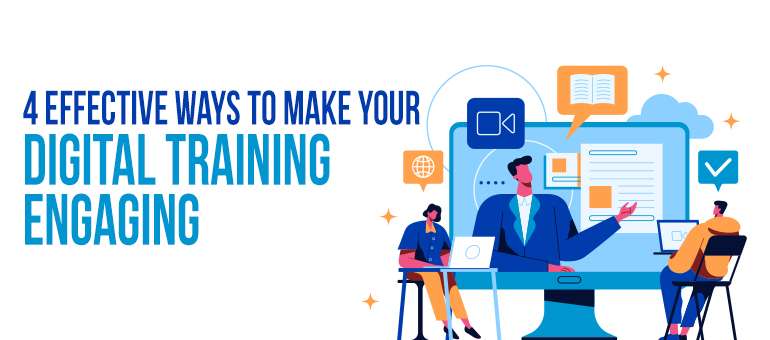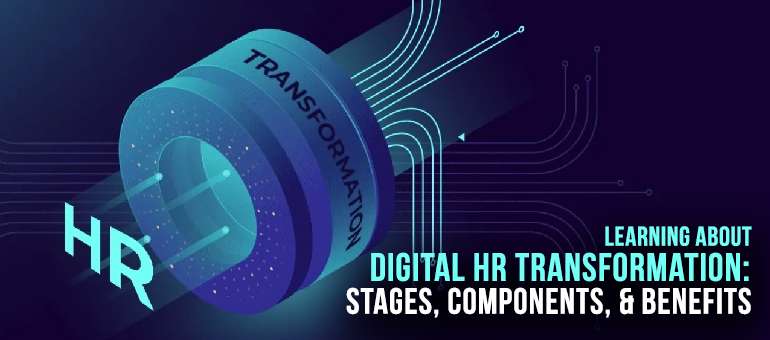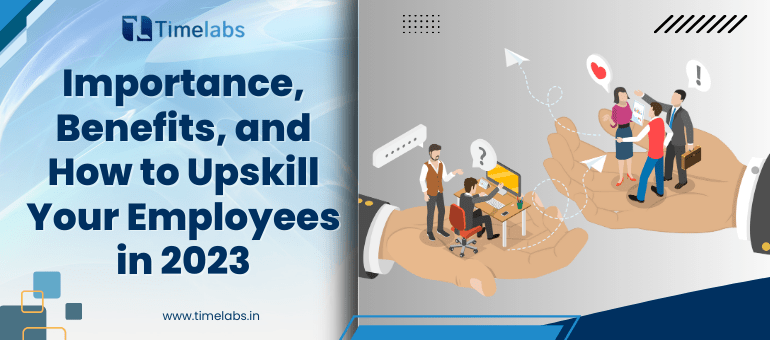Organizations have started to invest in the Learning and Development (L&D) department now more than ever. As most of us have settled in a hybrid work environment, we often think about our growth as professionals. Creating skill-based training programs consumes time. You should think critically, undertaking different aspects that contribute to making effective learning solutions.
Here comes the question of engagement. All your training courses should focus on engaging the learner, right from the enrolment stage. It’s relevant to discuss the contribution of the millennial workforce in pushing the L&D department to create engaging training courses.
Since millennials are called digital natives, one has to keep that in mind while designing e-learning courses. Their attention span is short. So, it has to be visually appealing and offer value. If you lag, a learner may experience digital fatigue.
It’s crucial to know how you can involve or engage a learner. Gone are the days of creating simple PowerPoint presentations. Now you must ask your audience what they want to learn. Rolling out the training content calendar using HR software is more on the part of the moderator. Let’s try to understand digital training from a learner’s perspective now.
Here’re four effective ways to make your digital training engaging and valuable.
Microlearning
If you’ve been designing e-learning courses for a while now, you would know how a 70-page PDF can bore you. But it comes with a fun-based challenge where you can chunk content and design an online course in phases or modules. Short content always works. A learner does not lose focus or get bored. Microlearning content is usually 5-10 minutes long.
For example, if you’re creating a training program for Project Management recruits, you should structure the content. A first-time user will find it easy to read. You can divide the course into three segments, with each segment enhancing the learner’s experience level, right from beginner and intermediate to advance.
This way, a learner may not stress about finishing the course in one go. You can include audio, videos, quizzes, surveys, and assessments to engage the learners. While at it, check on issues, such as poor audio quality, low-resolution screens, irrelevant images, repetitive topics, boring assessments, connectivity issues, etc. It’s the best way to overcome digital fatigue.
Gamification
Earlier, we have discussed why you should focus on creating video-based training courses to meet the needs of the millennial workforce. Let’s elaborate on that now. If you haven’t tried gamification in e-learning, it’s time that you do. To make training engaging, you can use gaming techniques to involve a learner right from the beginning of the course. This way, they won’t get bored and keep their curiosity level high to know what’s coming up next. We have all been there once.
In an online game, you have to level up at each stage to earn brownie points or win the game. Similarly, you can create your training program in such a way that it appeals to the learner. You can include rewards, challenges, quizzes, brownie points, scores, badges, etc.
How does it help? One can learn effectively and focus on knowledge retention. It can also boost the performance and productivity of the learner. Now you know how you can win the battle against digital fatigue. As HR, you can roll out the training calendar using HR payroll software to make your learners curious.
With that said, avoid creating complex gamification courses. It’s similar to replacing your old but simple payroll software with payroll management software having a complex user interface. It won’t serve the purpose. You will need time to understand its functionality. In 2021, employee engagement should be your priority.
Social Interaction
A learner may experience digital fatigue not only by using online tools for a specific period. They may find it hard to stick to their computers and listen to what learning agents say. It could make them feel socially isolated. Maybe, you want to share your learning experiences with your peers who have also enrolled in the same course. Understanding social learning is the need of the hour.
There’s a catch, though. Most of us are still working remotely. So, it leaves us little space to share our day with our peers. While discussing things over a cup of coffee is not the way here, you can exchange thoughts via live chat. How about joining a social club or an online forum where learners talk about their e-learning experiences? They can also help each other find solutions to minor technical glitches. Sharing is caring.
Modern HR and payroll management software comes with an in-built chat-based system. You can take an idea from it and create a digital platform or site where your employees interact and learn new things. They can comment or post updates on their social feed. The crux remains the same – engaging your learners.
Personalized Learning Experiences
If you want to make your digital training effective, you should know your audience. Know the needs of the learner. Understand their pain points. For example, if a client has requested you to create a training course for its sales team that is unable to achieve targets from the last two quarters, you can do a lot here. Instead of creating a generalized online course covering different ways to sell a product, you can involve them and know where they lag.
Maybe, they feel demotivated at the moment or possess limited knowledge about the product. It could also be their nervousness when talking to a client. It can be anything. When you know the problem, it becomes easy for you to create relevant learning solutions. As Benjamin Franklin once said, “Tell me and I forget, teach me and I remember, involve me and I learn.”
Don’t force your learner to begin the course from the first module itself. Take a lenient approach, instead. If your online sales program has ten modules, offer your learners the liberty to access the module, which they think would help them better rather than forcing them to learn the basics again. They may lose focus. So, create customized learning pathways to engage the learners.
The Final Word
Your digital training programs should be learner-centric. Think of interactivities that can help a learner grasp concepts well. Like you consider replacing your existing HR software with cloud-based HR software to stay relevant, you can think of bringing relevancy when designing digital training programs. If you try to feed them content that has no relevance to them, you may fail to create valuable e-learning experiences.
On the contrary, if you involve them and ask which online training format appeals to them, you may build skill-based training programs which can result in employee satisfaction and productivity. Engagement is the key.



